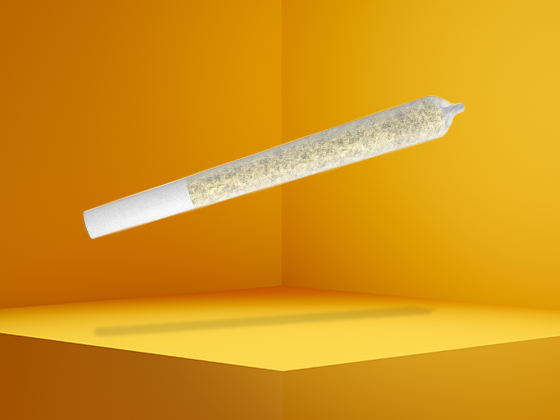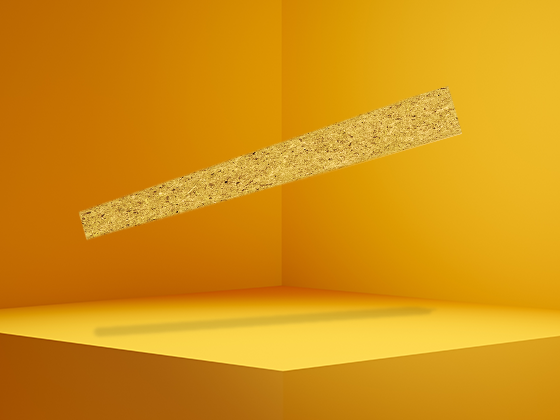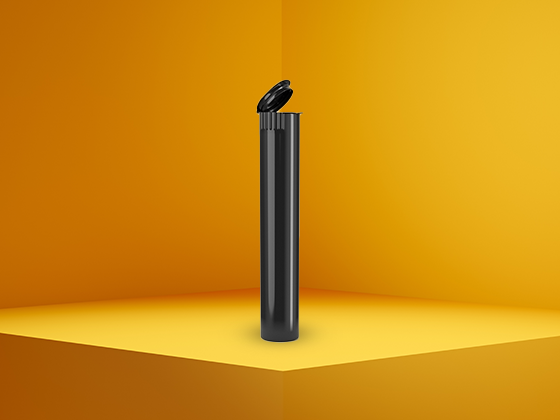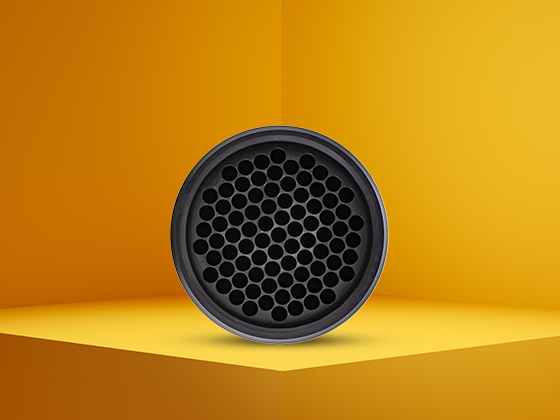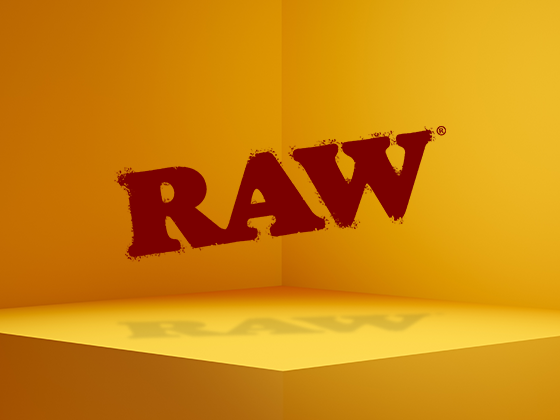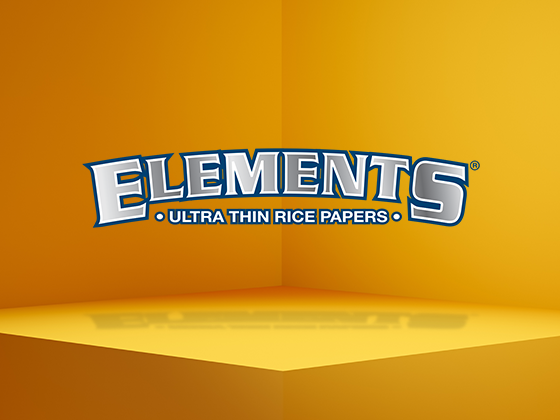Resources
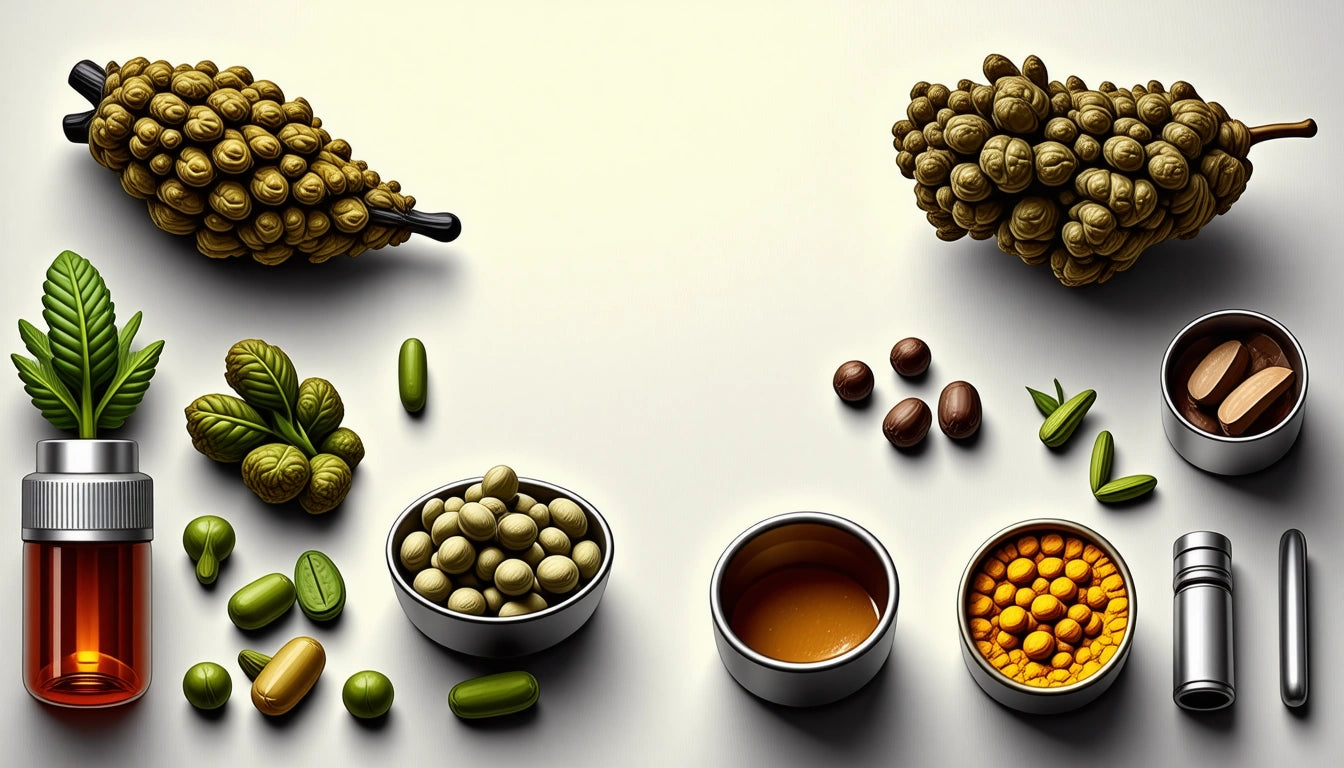
compliance
How Much Weed Is in a Joint: Grams, Cost, and Potency Explained
Table of Contents
Standard Joint Measurements: How Many Grams in a Joint
Joint Pricing Factors: What Determines Cost
Potency Considerations: THC Content in Joints
Consumption Guidelines: Maximizing Your Experience
Market Variations: Regional Differences in Joint Size and Cost
Safety and Packaging: Protecting Consumers and Children
Future of Joint Consumption: Trends and Innovations
Understanding how much weed is in a joint is essential for both new and experienced cannabis consumers. Whether you're curious about cost efficiency, dosing, or simply want to know what you're consuming, this guide breaks down the standard measurements, pricing factors, and potency considerations for cannabis joints.Standard Joint Measurements: How Many Grams in a JointThe average joint contains approximately 0.3 to 0.5 grams of cannabis, though this can vary based on rolling technique and preference. According to research on cannabis measurements, most pre-rolled joints sold in dispensaries typically contain about 0.5 to 1 gram of cannabis flower.For context:
A standard joint (0.3-0.5g): Perfect for solo consumption or sharing between two people
A pinner joint (0.25g or less): A slimmer joint with less cannabis, ideal for microdosing
A king-size joint (0.75-1g): Larger format for longer sessions or sharing among multiple people
With these measurements in mind, you can roll approximately 7-14 joints from an eighth ounce (3.5g) of cannabis, depending on your preferred joint size.Joint Pricing Factors: What Determines CostThe cost of a joint varies widely based on several factors. According to pricing insights, a single pre-rolled joint typically costs between $5-15 in legal markets, with premium options reaching $20 or more.Key pricing determinants include:
Flower quality: Premium strains command higher prices
THC content: Higher potency products generally cost more
Market location: Prices vary by state and local regulations
Packaging: Special packaging or multi-packs may offer better value
Brand premium: Established brands often charge more for their products
When considering how much is a joint of weed, remember that rolling your own from bulk flower is typically more cost-effective than purchasing pre-rolls, though pre-rolls offer convenience and consistency.Highlight: A typical cannabis joint contains 0.3-0.5 grams of flower and costs $5-15 in legal markets, though prices vary based on quality, potency, and location.Potency Considerations: THC Content in JointsUnderstanding potency is crucial when evaluating how much pot in a joint will affect you. Modern cannabis strains typically contain between 15-25% THC, though some premium varieties can reach 30% or higher.For a standard 0.5g joint with 20% THC content, you're consuming approximately 100mg of THC. However, due to combustion and other factors, only about 60% of this THC is typically absorbed when smoking.When exploring what are the strongest marijuana joints you can buy, look for:
Infused pre-rolls: Enhanced with concentrates like kief or oil
High-THC strains: Specially bred for maximum potency
Full-spectrum products: Containing the full range of cannabinoids for enhanced effects
Consumption Guidelines: Maximizing Your ExperienceHow you consume a joint significantly impacts your experience. Proper rolling and smoking techniques can help you get the most from your cannabis:Optimal Consumption Methods
Take small, measured puffs rather than deep inhalations
Allow 10-15 minutes between puffs to gauge effects
Consider using a filter tip for smoother hits
Store partially smoked joints properly to preserve freshness
For those concerned about dosage equivalence, comparing joints to other consumption methods can help you understand relative potency. For instance, the effects of a 0.5g joint might roughly compare to 10-15mg of THC in edible form, though the onset and duration differ significantly.Market Variations: Regional Differences in Joint Size and CostHow much weed in one joint and how much it costs can vary dramatically by location. In mature markets like Colorado or Oregon, prices tend to be lower due to market saturation and competition. Newer markets or those with stricter regulations often have higher prices.Regional variations also extend to typical joint sizes and packaging standards. Some markets favor smaller, precise pre-rolls (0.3-0.5g), while others commonly offer full-gram options. Understanding these regional differences can help consumers set appropriate expectations when traveling between markets.Safety and Packaging: Protecting Consumers and ChildrenSafety considerations are paramount in cannabis packaging, especially in legal markets. Proper packaging not only preserves product freshness but also prevents accidental consumption. According to safety guidelines for consumer products, cannabis packaging must be designed to be difficult for children under five to open while remaining accessible for adults.Most legal markets require cannabis products, including pre-rolled joints, to be sold in child-resistant packaging. These requirements help prevent accidental ingestion while ensuring the product remains fresh and potent until consumption.Future of Joint Consumption: Trends and InnovationsThe cannabis industry continues to evolve, with innovations affecting how much weed is in a joint and how it's consumed. Emerging trends include:
Precision dosing: Micro-dosed joints with exact cannabinoid content
Enhanced delivery systems: Filters designed to cool smoke and reduce harmful compounds
Specialty blends: Custom ratios of THC, CBD, and terpenes for targeted effects
Sustainable packaging: Eco-friendly options reducing the environmental impact
As consumer sophistication grows, expect to see more variety in joint sizes, compositions, and specialized products catering to specific needs and preferences. The future of joint consumption likely includes more personalization options while maintaining the social ritual that has made joints a cannabis consumption staple.Whether you're new to cannabis or a seasoned consumer, understanding how many grams of weed in a joint, typical costs, and potency considerations will help you make informed decisions about your consumption.
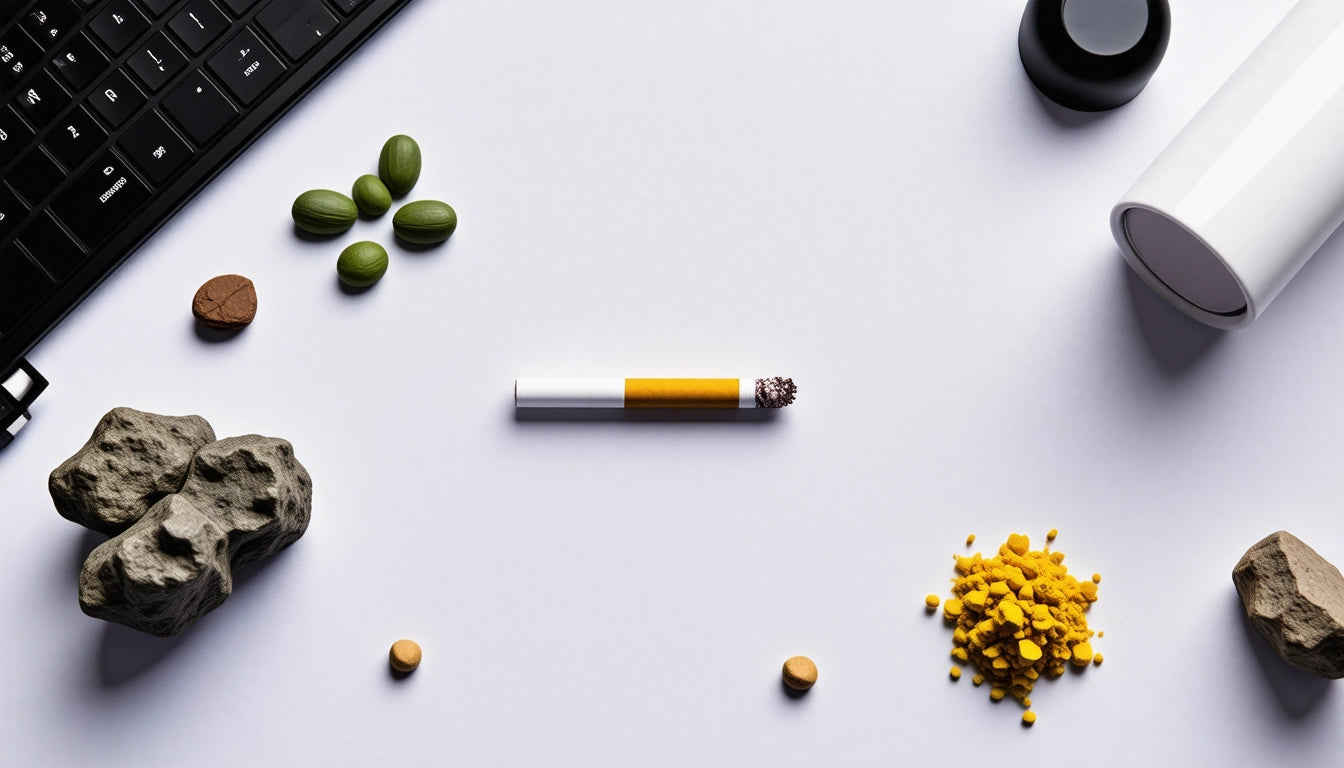
flower
Understanding Joint Smoking: Methods, Risks, and Variations
Table of Contents
What is Joint Smoking: The Basics
Health Considerations: Does Smoking Joints Cause Cancer?
Joint Variations: Beyond the Basic Roll
Can You Smoke Kief in a Joint?
Can You Smoke Moon Rocks in a Joint?
Joint Components: Filters and Partial Consumption
Can You Smoke a Joint Without a Filter?
Can You Smoke Half a Joint?
Best Practices for Healthier Joint Consumption
Joint smoking remains one of the most popular and traditional methods of cannabis consumption worldwide. Whether you're new to cannabis or a seasoned consumer, understanding the nuances of joint smoking can enhance your experience while helping you make informed decisions about consumption methods.What is Joint Smoking: The BasicsA joint is simply ground cannabis flower rolled in thin paper for smoking. Unlike blunts (which use tobacco leaf wraps) or spliffs (which mix cannabis with tobacco), traditional joints contain only cannabis and rolling paper. The popularity of joints stems from their simplicity, portability, and minimal equipment requirements.According to comprehensive joint smoking guides, proper joint rolling involves several key steps: grinding the flower to a consistent texture, creating an even distribution within the paper, and applying the right rolling technique for an even burn.Health Considerations: Does Smoking Joints Cause Cancer?The question of whether smoking joints causes cancer requires nuanced understanding. Any combustion process, including smoking cannabis, produces potentially harmful compounds. When cannabis burns, it releases carcinogens similar to those in tobacco smoke, though typically in different quantities and compositions.Research suggests that while cannabis smoke contains some carcinogens, the relationship between joint smoking and cancer is less established than with tobacco. However, regular cannabis combustion and inhalation may contribute to respiratory issues including chronic bronchitis and lung irritation.For those concerned about health impacts, comparing smoking methods can help identify alternatives with potentially reduced harm profiles, such as vaporization or edible consumption.Highlight: While joint smoking produces some carcinogens through combustion, the cancer risk appears lower than with tobacco smoking. Nevertheless, smoke-free consumption methods offer potential harm reduction benefits.Joint Variations: Beyond the Basic RollCan You Smoke Kief in a Joint?Kief, the collection of crystal-like trichomes that fall off cannabis flower, can indeed be smoked in a joint. This potent concentrate adds significant potency to the smoking experience. When adding kief to joints, consumers typically:
Sprinkle it throughout the ground flower before rolling
Create a line of kief along the length of the prepared flower
Roll a "twax" joint by applying kief to the outside of a completed joint using a binding agent
For precise kief measurement, many consumers rely on accurate digital scales designed specifically for cannabis products, ensuring they achieve their desired potency level without overwhelming the experience.Can You Smoke Moon Rocks in a Joint?Moon rocks (cannabis buds coated in oil and rolled in kief) can technically be included in joints, but this presents several challenges. The sticky, dense nature of moon rocks makes them difficult to grind and prone to creating airflow problems within a joint.For those determined to incorporate moon rocks into a joint, best practices include:
Breaking moon rocks into very small pieces rather than grinding
Mixing sparingly with regular ground flower
Ensuring proper drying time if freshly made
Using slightly thicker rolling papers for structural integrity
According to joint smoking technique guides, many experienced consumers prefer dedicated methods for moon rocks rather than joint incorporation.Joint Components: Filters and Partial ConsumptionCan You Smoke a Joint Without a Filter?Joints can absolutely be smoked without filters (also called crutches or tips). Filterless joints were the norm before the widespread adoption of paper filters. However, smoking without a filter presents several considerations:
Increased likelihood of plant material entering the mouth
Potential for a harsher smoking experience
More difficult handling as the joint burns down
Potential waste of cannabis in the final portion
For those interested in filterless options, alternative rolling techniques can help minimize these drawbacks while maintaining the traditional experience.Can You Smoke Half a Joint?Consuming half a joint and saving the remainder for later is a common practice, especially for solo consumers or those with lower tolerance. When smoking half a joint:
Extinguish gently by tapping or twisting against a non-flammable surface
Avoid using water, which can ruin the remaining portion
Store in an airtight container to preserve freshness and minimize odor
Expect a slightly harsher taste when relighting
For optimal preservation between sessions, proper storage techniques can maintain quality and minimize odor leakage.Best Practices for Healthier Joint ConsumptionWhile joint smoking carries inherent risks from combustion, several practices can potentially reduce harm:
Use unbleached, additive-free rolling papers
Consider hemp papers, which may contain fewer chemicals
Avoid deep inhalation or breath-holding, which doesn't increase effects but may increase tar deposition
Use proper filters to reduce particulate inhalation
Consider occasional breaks to allow respiratory system recovery
Stay hydrated before, during, and after smoking
When compared to other methods, joint smoking offers specific benefits and drawbacks that consumers should weigh according to their personal health considerations and preferences.Understanding joint smoking in all its variations allows consumers to make informed choices that balance tradition, convenience, potency, and health considerations in their cannabis journey.

flower
Creative Alternatives and Techniques for Rolling a Joint Without Traditional Papers
Table of Contents
Understanding Joint Rolling Basics
Safe Paper Alternatives for Rolling Joints
Fruit and Vegetable Options for Natural Smoking
Household Items That Can Substitute for Rolling Papers
Unsafe Alternatives to Avoid
Rolling Techniques When Using Alternative Materials
Preserving Your Cannabis When Alternative Rolling Methods Fail
When traditional rolling papers aren't available, cannabis enthusiasts often seek alternative methods to enjoy their flower. While learning how to roll a joint with ZigZag papers is a fundamental skill, knowing how to improvise can be equally valuable. This guide explores safe alternatives, practical techniques, and important considerations for rolling joints without conventional papers.Understanding Joint Rolling BasicsBefore exploring alternatives, it's helpful to understand what makes traditional rolling papers effective. Quality papers like ZigZag are thin, burn evenly, and contain minimal chemicals. They're designed specifically for smoking, with properties that affect burn rate, flavor, and overall experience.According to our comprehensive joint rolling guide, the ideal rolling material should be:
Thin enough to burn properly
Strong enough to hold together
Minimally flavored to preserve cannabis terpenes
Free of harmful chemicals or treatments
Safe Paper Alternatives for Rolling JointsCorn HusksDried corn husks make excellent natural rolling papers. They're fibrous, relatively thin, and impart minimal flavor. To use:
Select and clean a corn husk thoroughly
Allow it to dry completely
Trim to appropriate size
Moisten slightly before rolling
Bible PagesWhile controversial, Bible pages have historically been used as emergency rolling papers due to their thin, uncoated nature. If using this method, always choose blank pages without ink and remove any glue.Gum WrappersThe paper backing of gum wrappers can work in a pinch. Remove the foil layer completely, then use the remaining paper. These tend to burn quickly, so roll with care.Highlight: When considering if you can use parchment paper to roll a joint, the answer is yes, but with caution. Food-grade parchment paper without silicone coating can work as an emergency alternative, though it burns faster than traditional papers.Fruit and Vegetable Options for Natural SmokingNatural materials often provide the safest alternatives to rolling papers:Apple PipesRather than rolling, create a pipe from an apple:
Remove the stem
Create a bowl by carving a small depression at the top
Make a tunnel from the top to the side using a pen or similar tool
Create an airflow hole on the opposite side
Corn Husk WrapsAs mentioned in our article on alternative joint materials, corn husks have been used for centuries as natural smoking wraps. They provide a clean, subtle flavor and are biodegradable.Household Items That Can Substitute for Rolling PapersCommon household items can sometimes serve as temporary solutions:Empty CigarettesCarefully empty the tobacco from a cigarette and refill with ground cannabis. This method preserves the filter and paper structure.Rose PetalsFor a fragrant alternative:
Wash and dry rose petals (ensure they're pesticide-free)
Lightly toast them to remove moisture
Lick the edges to stick multiple petals together
Allow to dry slightly before rolling
This technique creates a flavorful, aromatic smoking experience with minimal harshness.Unsafe Alternatives to AvoidSome commonly suggested alternatives pose serious health risks:Receipt PaperIf you're wondering can you use receipt paper to roll a joint, the answer is a firm no. Receipt paper contains BPA and other chemicals that release toxic fumes when burned.Magazine or Newspaper PagesThese contain inks and chemicals that produce harmful smoke when burned. The colored inks are particularly dangerous.Aluminum FoilWhile not a paper alternative, some attempt to create foil pipes or wraps. This can release aluminum particles when heated, potentially causing respiratory issues.Rolling Techniques When Using Alternative MaterialsWhen learning how to roll a joint without papers, your technique may need adjustment:The Envelope FoldFor stiffer materials like corn husks:
Create a V-shaped trough with your alternative material
Place ground cannabis in the center
Fold one side over, then the other
Seal with honey or natural tree sap if needed
The Cylinder MethodFor more paper-like alternatives:
Create a cylinder shape around a pencil
Secure one end by twisting
Remove the pencil
Fill with ground cannabis
Twist the other end or use a makeshift filter
For more detailed instructions, our beginner's guide to rolling the perfect joint offers techniques that can be adapted for alternative materials.Preserving Your Cannabis When Alternative Rolling Methods FailIf you can't find a suitable rolling alternative, focus on preserving your cannabis until proper papers are available. Humidity control packs designed for cannabis storage can maintain your flower's freshness and potency until you can enjoy it properly. These specialized packs maintain the ideal moisture level, preventing your cannabis from drying out or developing mold.When traditional papers aren't available, creativity and caution should guide your approach. While emergency alternatives can work temporarily, investing in quality rolling papers and keeping them on hand remains the best practice for enjoying cannabis safely and effectively.

business tips
Clever and Discreet Places to Hide a Joint
Table of Contents
Why Joint Storage Matters: Protection and Discretion
Home Hiding Spots: Everyday Items That Double as Storage
On-the-Go Solutions: Portable and Inconspicuous Options
Travel Considerations: Odor Control and Security
Creative DIY Options: Repurposed Items for Joint Storage
Storage Best Practices for Joint Preservation
Finding where to hide a joint effectively combines practicality with discretion. Whether you're storing for later use or need to keep your pre-rolls out of sight, the right hiding spot ensures your joints stay fresh, undetected, and ready when you want them. This guide explores creative solutions for home storage, on-the-go concealment, and travel situations.Why Joint Storage Matters: Protection and DiscretionProper joint storage serves two essential purposes: preserving quality and maintaining privacy. Exposure to air, light, and moisture can degrade cannabinoids and terpenes, diminishing potency and flavor. Meanwhile, discretion remains important for many consumers regardless of local legality.According to proper joint storage guidelines, the ideal storage solution protects against crushing, prevents odor leakage, and shields from environmental factors that accelerate degradation.Home Hiding Spots: Everyday Items That Double as StorageHollowed Book StorageA classic hiding spot involves hollowing out a hardcover book. Choose a thick volume unlikely to be picked up by others. Cut a rectangular compartment in the pages using a craft knife, leaving the cover and outer page edges intact. This creates an inconspicuous shelf item that can hold several joints.Electronic Device BoxesMost homes contain empty boxes from electronics like smartphones or headphones. These sturdy containers often feature compartments that perfectly fit joints. Their ubiquity makes them forgettable to curious eyes yet accessible to you.Empty Vitamin or Supplement BottlesOpaque vitamin bottles provide excellent joint protection. Their child-resistant caps and moisture-resistant design make them practical storage options that blend among bathroom or kitchen items. For optimal freshness, consider adding humidity control packets to maintain ideal moisture levels and preserve terpene profiles.On-the-Go Solutions: Portable and Inconspicuous OptionsWhen you need to bring a joint along discreetly, these options offer protection while maintaining a low profile:
Repurposed lip balm tubes (thoroughly cleaned)
Cigarette cases or metal tins
Eyeglass cases with hard shells
Keychain pill containers
Mint tins with secure closures
Each option balances accessibility with discretion, allowing you to carry joints without drawing attention. The best portable solutions also protect against crushing and moisture exposure, preserving joint quality until you're ready to use it.Highlight: When choosing where to hide a joint, prioritize containers that seal completely to contain odors and protect against moisture, which can significantly extend shelf life and maintain potency.Travel Considerations: Odor Control and SecurityTravel situations demand extra attention to odor containment and security. Cannabis has a distinctive smell that can permeate through many materials. Consider these specialized solutions:Smell-Proof BagsPurpose-made smell-proof bags use activated carbon or multiple layers to trap odors completely. These bags come in various sizes and often feature additional security like combination locks.Vacuum-Sealed ContainersSmall vacuum-sealed containers create an airtight environment that prevents odor escape while protecting joints from crushing. Some portable options use a simple push mechanism to create the vacuum seal.When traveling, remember that proper joint handling techniques can minimize odor transfer to your hands and clothing, further reducing detection risk.Creative DIY Options: Repurposed Items for Joint StorageWith some creativity, everyday items can become effective joint hiding spots:Highlighter Pen StashHollow highlighters can be modified by removing the ink reservoir and felt tip. The empty tube perfectly fits a standard joint, and the cap creates an airtight seal. The highlighter continues to look functional on your desk or in a pencil case.False Bottom ContainersCreate false bottoms in containers like coffee cans or food jars. Place a cardboard divider covered with the original product on top, with joints stored securely underneath. This works particularly well for items kept in pantries or kitchen cabinets.Wall Switch or Outlet SafesSpecialized wall safes that look like electrical outlets or light switches can be installed without electrical connections. These provide excellent hiding spots that blend completely with room decor.For any DIY solution, consider how well it addresses the key concerns outlined in joint preservation techniques, particularly protection from light, air, and physical damage.Storage Best Practices for Joint PreservationRegardless of where you hide your joints, following these practices ensures they remain in optimal condition:
Avoid excessive heat, which can degrade cannabinoids
Store away from direct sunlight to prevent terpene degradation
Consider using humidity control packs for long-term storage
Avoid refrigeration, which can introduce damaging moisture
Use containers that won't impart unwanted odors or flavors
The most effective hiding spots incorporate these preservation principles while providing quick access when needed. As noted in comprehensive joint guides, proper storage significantly impacts the smoking experience, preventing issues like uneven burning or canoeing.Whether you choose commercial solutions or creative DIY approaches, the perfect place to hide a joint balances accessibility, discretion, and preservation. By considering your specific needs and environment, you can develop a storage system that keeps your joints in perfect condition until you're ready to enjoy them.
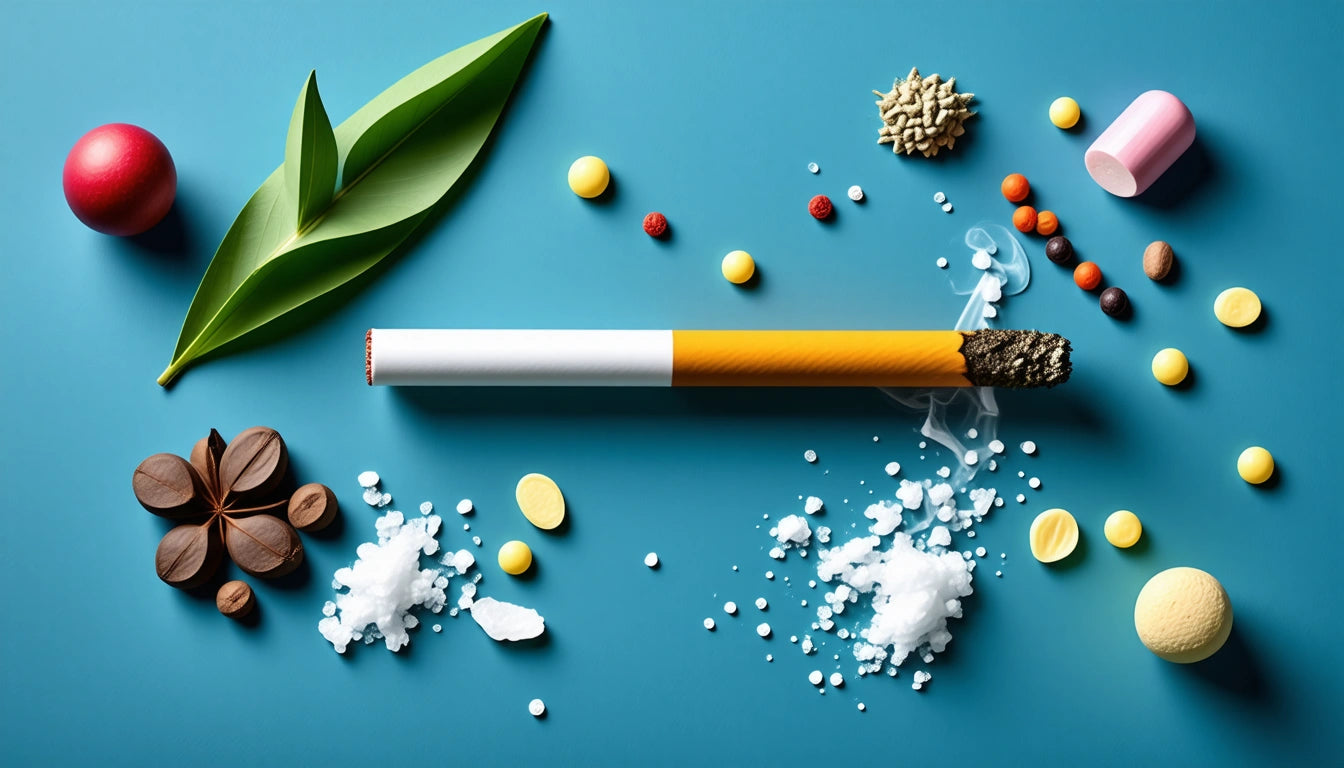
flower
Effective Techniques for Smoking and Preserving a Joint
Table of Contents
Proper Joint Smoking Techniques
How to Put Out a Joint for Later
Troubleshooting Common Joint Issues
Storage Solutions for Preserving Joints
Maximizing Your Joint Experience
Joints remain one of the most popular and convenient methods of cannabis consumption. Whether you're a seasoned smoker or new to the experience, understanding how to properly smoke, preserve, and troubleshoot joints can significantly enhance your enjoyment and help conserve your cannabis. This guide covers essential techniques for getting the most out of your joints, including how to hit a joint properly, how to put out a joint for later use, and solutions for common problems.Proper Joint Smoking TechniquesSmoking a joint effectively involves more than simply lighting up and inhaling. Proper technique ensures an even burn, better flavor, and a more enjoyable experience overall.How to Hit a Joint ProperlyTo hit a joint effectively, follow these steps:
Hold the joint between your thumb and index finger near the crutch or filter
Bring it to your lips and create a gentle seal, but don't make it wet with saliva
Take a slow, steady pull rather than a sharp inhale
Hold the smoke briefly (2-3 seconds is sufficient) before exhaling
Rotate the joint between hits to promote even burning
According to comprehensive joint smoking guides, proper inhalation technique prevents canoeing (uneven burning) and maximizes the effects of your cannabis.Lighting TechniquesThe way you light your joint affects how it burns throughout your session:
Toast the tip evenly by rotating it above the flame, not directly in it
Once toasted, take gentle pulls while continuing to rotate
Avoid using torch lighters which can burn too hot
If using hemp wick, light it first, then use it to light your joint for a cleaner taste
These techniques help establish an even cherry (the burning ember at the tip) that will lead to a smoother smoking experience.Highlight: When hitting a joint, gentle, consistent pulls and proper rotation are key to preventing uneven burning and ensuring maximum enjoyment.How to Put Out a Joint for LaterKnowing how to properly extinguish a joint for later use helps preserve both the cannabis and the flavor profile. Here are the best methods for putting out a joint:The Gentle Tap MethodThis is the most common and effective approach:
Gently tap the burning end against a hard, non-flammable surface
Carefully twist the burnt end to remove loose ash
Continue tapping and twisting until no more embers remain
Check that it's fully extinguished by observing for any smoke
This method preserves most of the joint while minimizing damage to the paper.The Cover MethodFor those looking for the best way to put out a joint with minimal damage:
Place the burning end against a metal surface
Cover it with a small metal container or ashtray to cut off oxygen
Wait 30-60 seconds for it to naturally extinguish
Check that it's fully out before storage
This approach is gentler than the tapping method and helps preserve more of the joint's structure.For precise measurement of how much cannabis remains in your partially used joint, accurate digital scales can be helpful for tracking consumption and ensuring you're getting the most value from your products.Troubleshooting Common Joint IssuesEven well-rolled joints can present problems. Here are solutions to common issues:Why Is My Joint Not Pulling?Poor airflow is a common complaint. If your joint is not pulling properly, consider these causes and solutions:
Overpacking: The cannabis may be too tightly packed. Try gently rolling the joint between your fingers to loosen the contents
Clogged filter: Small particles may be blocking the filter. Try clearing it with a thin tool or replacing it if possible
Collapsed paper: The rolling paper may have folded or creased. Sometimes this requires rerolling
Moisture issues: Damp cannabis can restrict airflow. Always ensure your flower is properly cured
According to expert rolling guides, proper grinding consistency and even distribution are key to preventing airflow issues.Fixing Uneven BurnsIf your joint is burning unevenly (canoeing):
Wet your finger slightly and dampen the faster-burning side
Rotate the joint so the faster-burning side is on the bottom
Take slower, more deliberate pulls
If necessary, relight the joint focusing on the unlit portions
Properly closing a joint during rolling can help prevent these issues before they start.Storage Solutions for Preserving JointsAfter learning how to put a joint out, proper storage becomes essential for maintaining freshness and potency.Short-Term Storage OptionsFor joints you plan to consume within a few days:
Doob tubes: Plastic or glass tubes designed specifically for joints
Repurposed containers: Small mint tins or prescription bottles can work in a pinch
Joint cases: Specialized cases with individual slots for multiple joints
Proper joint storage techniques emphasize protection from air, light, and physical damage.Long-Term PreservationFor extended storage periods:
Use airtight containers with humidity control packs
Store in a cool, dark place away from direct sunlight
Consider vacuum-sealed options for maximum freshness
Label with dates to track freshness
These methods help preserve terpenes and cannabinoids, maintaining the quality of your joints over time.Maximizing Your Joint ExperienceBeyond the basics of how to hit a joint and how to turn off a joint, there are additional techniques to enhance your overall experience:
Proper grinding: Consistent, medium-fine grinding provides optimal burning
Quality papers: Invest in slow-burning, thin papers for better flavor
Humidity control: Too dry cannabis burns too quickly, while too moist cannabis burns poorly
Mindful consumption: Take breaks between hits to gauge effects and prevent waste
According to advanced rolling technique guides, these small adjustments can significantly improve your joint experience.Whether you're learning how to close a joint properly during rolling or figuring out the best way to put out a joint for later enjoyment, these techniques will help you get the most from your cannabis. With practice, proper joint handling becomes second nature, allowing you to focus on enjoying the experience rather than troubleshooting problems.
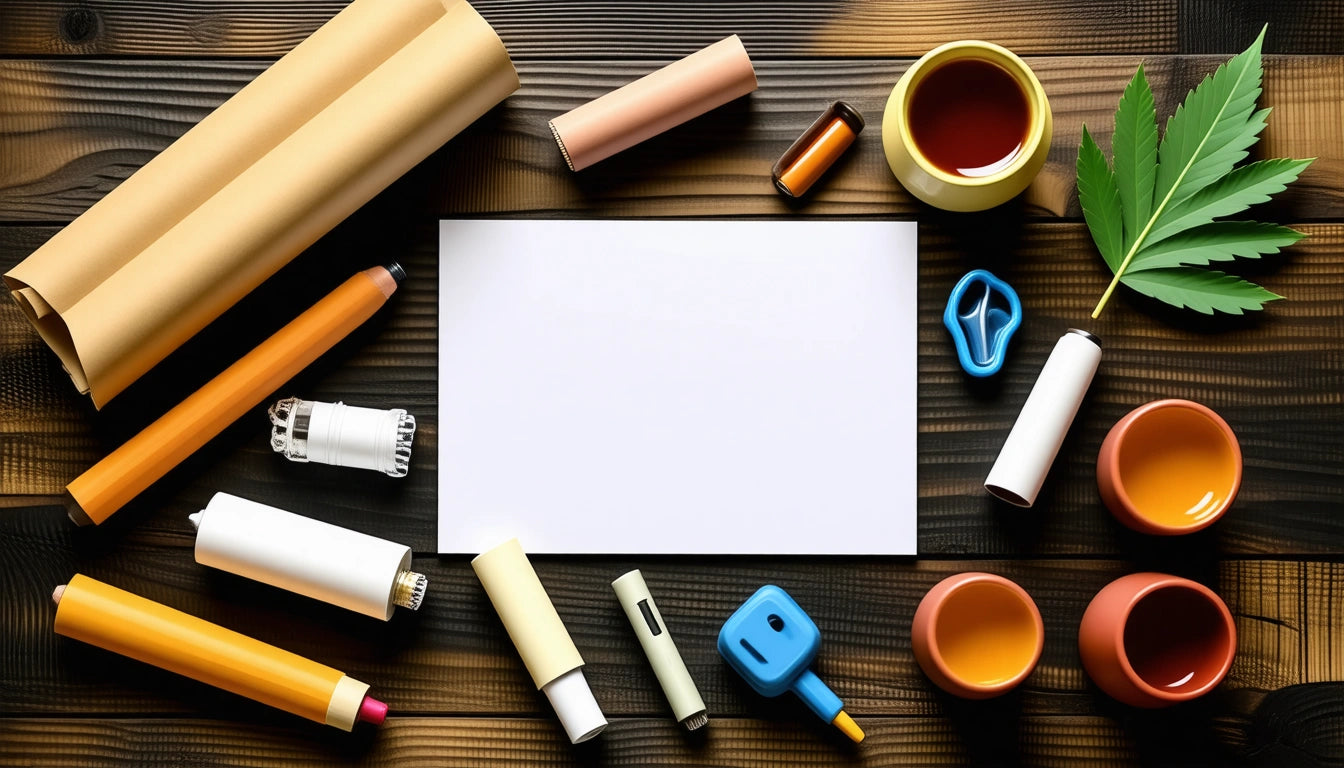
flower
Creative Alternatives and Tips for Rolling a Joint Without a Filter
Table of Contents
Understanding Joint Filters: Purpose and Function
Filterless Rolling: Techniques and Considerations
Alternative Materials for Rolling Joints
Household Items You Can Use to Roll Joints
Measuring Cannabis Without Traditional Tools
Expert Tips for Successful Filterless Joints
Whether you've run out of filters or simply prefer to explore different ways to roll a joint, rolling without a traditional filter offers both challenges and creative opportunities. This guide explores what you can roll a joint with when traditional supplies are unavailable and provides practical techniques for filterless rolling.Understanding Joint Filters: Purpose and FunctionBefore diving into alternatives, it's important to understand what joint filters do. Traditional filters, also called crutches or tips, serve several purposes:
Prevent cannabis from entering your mouth
Provide structural support for the joint
Allow better airflow
Keep fingers from burning as the joint burns down
Maximize consumption of cannabis
While traditional rolling techniques typically include filters, going filterless is entirely possible with the right approach.Filterless Rolling: Techniques and ConsiderationsCan you roll a joint without a filter? Absolutely. In fact, before filters became commonplace, this was the standard approach. When rolling without a filter:The Pinch MethodOne effective technique is the pinch method, where you slightly twist and pinch the end of the joint that would normally hold the filter. This creates a natural restriction that prevents herb from falling out while still allowing airflow.The Fold-Over TechniqueAnother approach is to fold over the paper at the end where you would normally place a filter. This creates a thicker area that provides some of the structural benefits of a filter without requiring additional materials.As noted in this beginner's guide, filterless joints require more careful handling during smoking to prevent burning your fingers as the joint burns down.Highlight: Filterless joints often provide a more direct flavor experience but require careful rolling technique and attentive smoking to prevent waste.Alternative Materials for Rolling JointsWhen considering what to roll a joint with beyond traditional rolling papers, several alternatives exist:Natural Alternatives
Corn husks (dried and cleaned)
Rose petals (baked briefly to dry)
Thin rolling paper alternatives
Hemp wraps
Paper Alternatives
Bible pages (unprinted, typically from the back)
Receipt paper (though not recommended due to chemicals)
Thin notebook paper (remove any lines if possible)
As explained in this guide on alternative rolling techniques, the key is finding materials that are thin enough to burn properly but sturdy enough to hold your cannabis.Household Items You Can Use to Roll JointsIf you're wondering what you can use to roll a joint from around your house, several options exist:Food-Based Wrappers
Corn husks (dried)
Seaweed papers (nori)
Rice paper (from the kitchen, not art supplies)
Paper Products
Gum wrappers (with foil carefully removed)
Cigarette papers (emptied of tobacco)
Thin tissue paper
Remember that any alternative should be free of toxic inks, chemicals, or treatments that could be harmful when burned. Safety should always be your priority when exploring what can you roll a joint with from household items.Measuring Cannabis Without Traditional ToolsProper measurement is crucial for rolling a good joint, with or without a filter. While dedicated digital scales for accurate cannabis measurement are ideal, you can improvise when necessary:
Coin comparison: A U.S. nickel weighs about 5 grams
Visual estimation: With practice, you can estimate amounts by sight
DIY balance scale: Create a simple balance using household items
Consistent measurement helps you understand how many joints you can roll with your cannabis supply, making your stash last longer.Expert Tips for Successful Filterless JointsTo perfect your filterless rolling technique, consider these advanced tips:Preventing CloggingWithout a filter, joints can become clogged more easily. Grind your cannabis consistently but not too finely to maintain proper airflow throughout the smoking experience.Managing the BurnFilterless joints may burn unevenly. After rolling, gently roll the joint between your fingers to ensure even distribution of cannabis. This helps create a more consistent burn from start to finish.Improvised HoldersAs the joint burns down, you'll need a way to hold it without burning your fingers. Small clips, tweezers, or even a paperclip bent into shape can serve as improvised holders for the final portion of your joint.With practice, you'll develop your own preferred techniques for what to roll a joint with and how to handle filterless smoking. The art of smoking and preserving joints is as much about personal preference as it is about technique.Whether you're exploring different ways to roll a joint out of necessity or curiosity, these alternatives and techniques will help you enjoy your cannabis even when traditional supplies aren't available. Remember that practice makes perfect, and don't be discouraged if your first few filterless joints aren't masterpieces. With time, you'll develop the skills to roll excellent joints with or without filters, using whatever materials you have on hand.

flower
The Ultimate Guide to Rolling Joints: Tips and Techniques for Every Style
Table of Contents
Essential Supplies for Rolling the Perfect Joint
Basic Joint Rolling Technique for Beginners
Using Rolling Tools: Joint Rollers and Rolling Trays
Advanced Rolling Techniques for Experienced Users
Rolling Without Filters: Tips and Alternatives
Troubleshooting Common Rolling Issues
Mastering the Art of Joint Rolling: Practice and Patience
Rolling the perfect joint is a skill that combines technique, patience, and practice. Whether you're a beginner learning how to roll a joint for the first time or an experienced roller looking to perfect your craft, this comprehensive guide covers everything from basic techniques to advanced styles and troubleshooting tips.Essential Supplies for Rolling the Perfect JointBefore learning how to roll a joint, gather these essential supplies:
Quality cannabis flower (ground evenly)
Rolling papers (hemp, rice, or flavored)
Filter tips or crutches
Grinder
Rolling tray to catch loose material
Accurate digital scale for precise dosing
Poker tool for packing (optional)
The quality of your supplies directly impacts your rolling experience. For beginners, slightly thicker papers like hemp provide more forgiveness during the learning process. Having a dedicated rolling tray helps contain your workspace and prevents waste.Basic Joint Rolling Technique for BeginnersIf you're wondering how to roll a easy joint, follow these steps:Step 1: Prepare Your MaterialGrind your cannabis to a medium consistency. Too fine and it might burn too quickly; too coarse and it won't burn evenly. Proper preparation is crucial for a smooth-burning joint.Step 2: Create Your FilterFold a small piece of filter paper or thin cardboard in an accordion pattern, then roll it to form a cylinder. This creates the crutch or tip that provides structure and prevents plant material from entering your mouth.Step 3: Fill and Shape Your PaperPlace the filter at one end of the paper with the gummed edge facing up and away from you. Distribute your ground cannabis evenly along the crease of the paper. Use your fingers to shape the material into a cylinder.Step 4: Roll and TuckHold the paper between your thumbs and forefingers. Roll it back and forth to compact the cannabis into a cylinder shape. Once shaped, tuck the non-gummed edge of the paper over the cannabis and behind the filter.Step 5: Seal and FinishLick the gummed edge, then roll upward to seal the joint. Twist the excess paper at the end to prevent spillage. For those learning how to roll joints tighter, use a pen or similar tool to gently pack down the cannabis from the open end.Highlight: Consistent practice is key to mastering how to roll a joint. Don't be discouraged if your first attempts aren't perfect. Focus on even distribution and proper tucking technique.Using Rolling Tools: Joint Rollers and Rolling TraysFor those wondering how to roll a joint with a roller or how to roll a joint with a joint roller, these devices can significantly simplify the process:Joint Roller MachinesThese plastic devices create perfectly cylindrical joints with minimal effort:
Open the roller and place a paper in the groove with the gummed edge facing you
Add your filter to one end
Distribute ground cannabis evenly
Close the roller and roll forward several times
Insert the gummed edge and continue rolling to seal
Joint rollers are perfect for beginners or those with dexterity issues who still want to enjoy freshly rolled joints.Blazy Susan Rolling TraysLearning how to roll a joint Blazy Susan style involves using their specialized pink rolling trays with built-in compartments and non-stick surfaces. These trays help organize your materials and provide a clean workspace for more efficient rolling.Advanced Rolling Techniques for Experienced UsersOnce you've mastered the basics, you might want to explore how to roll a fat joint or how to roll cool joint variations:The Cone JointA cone joint is wider at the lighting end and tapers toward the filter. This style provides a substantial first hit and a gradual decrease in intensity. The technique involves distributing more material toward the lighting end while maintaining the same rolling technique.Cross Joints and Specialty ShapesFor those interested in how to roll cool joint designs, cross joints and other artistic variations require multiple papers and precise hole-poking techniques. These are best attempted after mastering basic rolling skills.Rolling Without Filters: Tips and AlternativesIf you're interested in how to roll a joint without a tip or traditional filter, there are several approaches:
Use a small piece of thick paper folded several times
Create a spiral from business card material
Roll a tighter end to serve as a natural filter
Learning how to roll a joint without traditional filter materials can be useful in situations where proper supplies aren't available.Troubleshooting Common Rolling IssuesEven experienced rollers encounter challenges. Here are solutions to common problems:For Loose JointsIf you're struggling with how to roll joints tighter:
Use slightly more cannabis
Practice the tucking motion with more precision
Pack the joint after rolling using a thin tool
Ensure your material is properly ground
For Uneven Burning (Canoeing)Uneven burning often results from:
Inconsistent grinding
Air pockets in the joint
Uneven material distribution
To prevent this, ensure even distribution and proper packing. For how to roll a small joint that burns evenly, pay extra attention to consistent density throughout.Paper TearingWhen learning how to roll a joint without a rolling machine, paper tearing is common. Solutions include:
Using less moisture when licking the gummed edge
Handling papers with dry fingers
Choosing slightly thicker papers for practice
Mastering the Art of Joint Rolling: Practice and PatienceBecoming proficient at rolling joints takes time and practice. Each person develops their own style and preferences. The key is consistency and finding what works for your hands and smoking preferences.Remember that rolling is both functional and artistic. Many enthusiasts take pride in their rolling skills, seeing it as part of the ritual and experience of cannabis consumption. With the techniques covered in this guide and plenty of practice, you'll be rolling perfect joints suited to your preferences in no time.Whether you prefer learning how to roll a fat joint for sharing or how to roll a small joint for personal use, the fundamental techniques remain the same. Focus on even distribution, proper tucking, and consistent practice to develop this valuable skill.
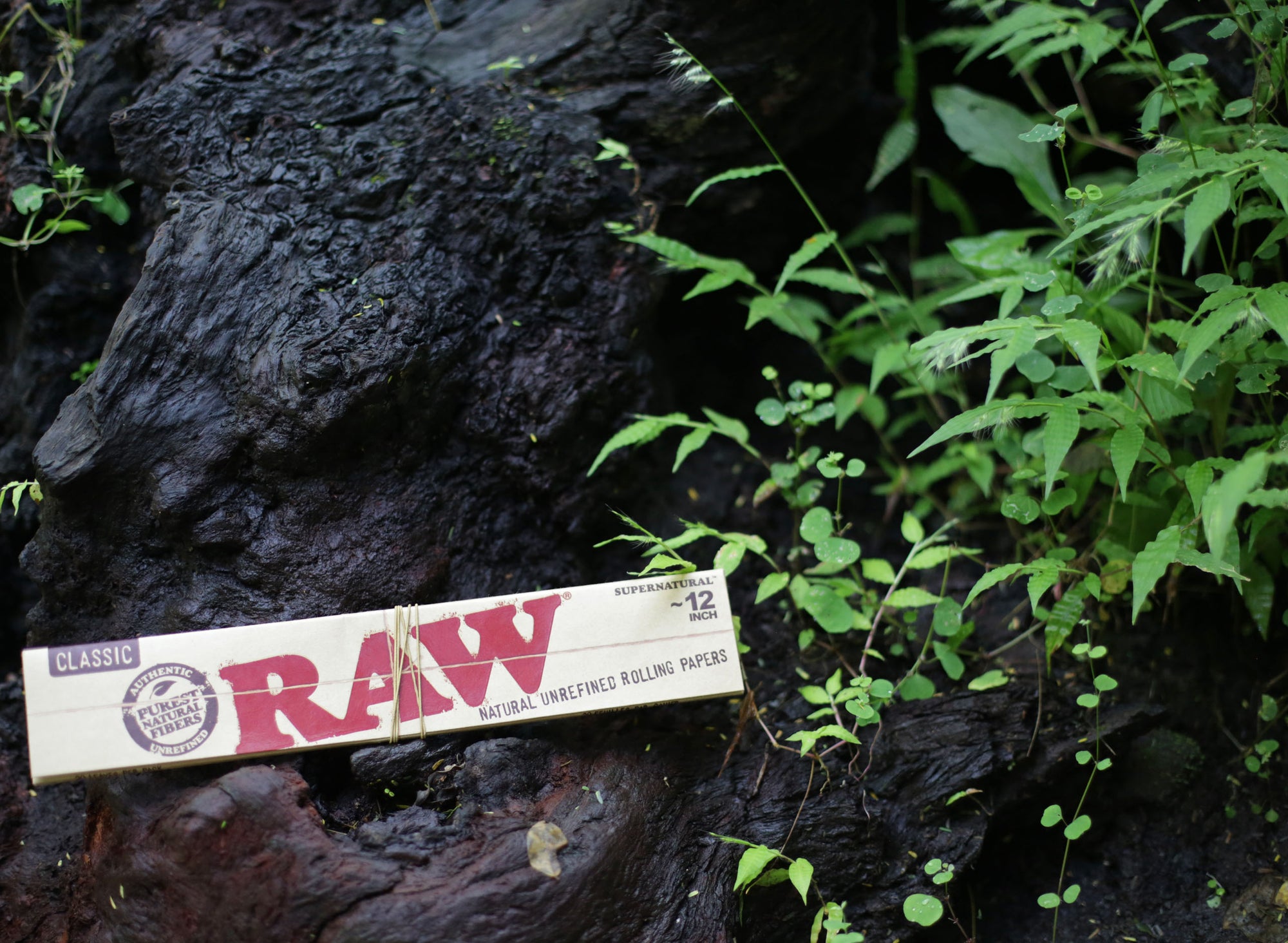
branding
Exploring the Diverse World of RAW Papers: Types, Tips, and Flavors
Table of Contents
Understanding RAW Papers: Origins and Philosophy
Types of RAW Papers: Finding Your Perfect Match
RAW Black Papers: Premium Ultra-Thin Option
Flavored RAW Papers: Myth vs. Reality
RAW Papers with Tips: Convenience in One Package
Rolling Techniques for RAW Papers
Essential Accessories and Tools for RAW Paper Users
The Future of Rolling: Innovations in the RAW Paper Ecosystem
Exploring the Diverse World of RAW Papers: Types, Tips, and FlavorsRAW papers have revolutionized the rolling experience with their commitment to natural, unrefined materials and innovative designs. Whether you're new to rolling or a seasoned enthusiast, understanding the nuances between RAW paper varieties can significantly enhance your experience. This comprehensive guide explores the complete RAW lineup, from classic to black RAW papers, along with essential tips and techniques.Understanding RAW Papers: Origins and PhilosophyRAW rolling papers stand out in the market for their dedication to purity and sustainability. Unlike conventional papers, RAW papers are unbleached, unrefined, and free from additives. The brand's philosophy centers around creating products that are as natural as possible while maintaining superior functionality.According to our comprehensive guide on RAW paper composition, these papers are made from natural plant fibers, primarily hemp, flax, and rice. This composition contributes to their characteristic light brown color and thin texture that many users prefer for a cleaner smoking experience.Types of RAW Papers: Finding Your Perfect MatchRAW Classic PapersRAW paper classic varieties represent the original lineup that built the brand's reputation. These papers feature a light tan color and are made from unbleached, natural fibers. They offer a balanced experience with moderate thickness and a natural gum line derived from plants.The classic line comes in various sizes including:
Single Wide (70mm x 37mm)
1 ¼ Size (79mm x 45mm)
King Size (110mm x 53mm)
King Size Slim (110mm x 45mm)
For those seeking more detailed information about the different types and their specific uses, our ultimate guide to RAW rolling papers provides comprehensive insights.RAW Organic Hemp PapersThe Organic Hemp line features papers made exclusively from organically grown hemp. These papers have gained popularity among health-conscious users concerned about paper safety and organic credentials. They burn slightly slower than the classic variety and provide a very subtle sweet taste.Highlight: All authentic RAW papers feature the brand's patented criss-cross watermark and natural gum line, which help distinguish them from counterfeits.RAW Black Papers: Premium Ultra-Thin OptionBlack RAW paper represents the brand's ultra-thin premium line. At just 20 microns thick, these papers are among the thinnest on the market, designed to provide minimal paper presence for a purer experience. The black designation refers to the product line, not the color of the papers themselves, which maintain RAW's signature unbleached appearance.Many enthusiasts choose RAW black papers for their:
Ultra-thin profile for less paper taste
Slower burn rate
Enhanced flavor preservation
Premium rolling experience
For an in-depth analysis of these premium papers, including user experiences and comparisons, check out our detailed review of RAW black rolling papers.Flavored RAW Papers: Myth vs. RealityContrary to popular belief, authentic RAW does not produce flavored RAW papers. The brand stays true to its natural philosophy by avoiding artificial flavors or additives. What some users might perceive as flavored options are actually papers from other brands or counterfeit products.For those interested in flavored alternatives, there are legitimate flavored papers on the market from other manufacturers. However, it's important to recognize that pink RAW papers and other colored varieties claiming to be flavored RAW products are not authentic brand offerings.RAW Papers with Tips: Convenience in One PackageRAW paper with tips products offer an all-in-one solution for rollers. These convenient packages include both papers and filter tips, eliminating the need to purchase them separately. The RAW tips are made from the same unbleached, natural materials as their papers, maintaining consistency in quality and philosophy.Popular RAW papers with tips options include:
RAW Classic Connoisseur with Tips
RAW Black with Tips
RAW Organic Hemp with Tips
These combination packs are especially convenient for on-the-go use and beginners who are learning to roll with proper filtration.Rolling Techniques for RAW PapersMastering the art of rolling with RAW papers requires practice and technique. The thin nature of these papers, especially the black variety, can present a learning curve for beginners. Our guide on rolling techniques provides detailed instructions for achieving the perfect roll.Key tips for successful rolling include:
Use the right amount of material (not too much, not too little)
Distribute the material evenly across the paper
Tuck the paper gently but firmly when rolling
Use RAW tips for structural support and better airflow
Consider using a quality rolling tray to keep your workspace organized and prevent material loss
Essential Accessories and Tools for RAW Paper UsersThe RAW ecosystem extends beyond just papers to include a variety of accessories that enhance the rolling experience. These complementary products work seamlessly with RAW papers to provide a complete solution.Popular accessories include:
RAW rolling trays for material preparation
RAW rolling machines for consistent results
RAW filter tips in various sizes
RAW parchment paper for storage and preparation
RAW hemp wick as an alternative lighting method
For those looking to streamline their rolling process, pre-rolled RAW cones offer a convenient alternative that maintains the quality and experience of traditional RAW papers without requiring rolling skills.The Future of Rolling: Innovations in the RAW Paper EcosystemRAW continues to innovate within the rolling paper space, introducing new products that address evolving consumer needs while maintaining their commitment to natural materials. Recent developments include RAW paperless alternatives like hemp wraps, expanded organic offerings, and more sustainable packaging options.As the market evolves, we can expect to see continued emphasis on sustainability, with biodegradable packaging and responsibly sourced materials becoming increasingly important. The brand's focus on education about proper rolling techniques and authentic product identification also represents a positive trend in consumer awareness.For those looking to stay current with the latest RAW paper innovations and techniques, regularly checking our updated guides on RAW products will provide the most current information on new releases and best practices.
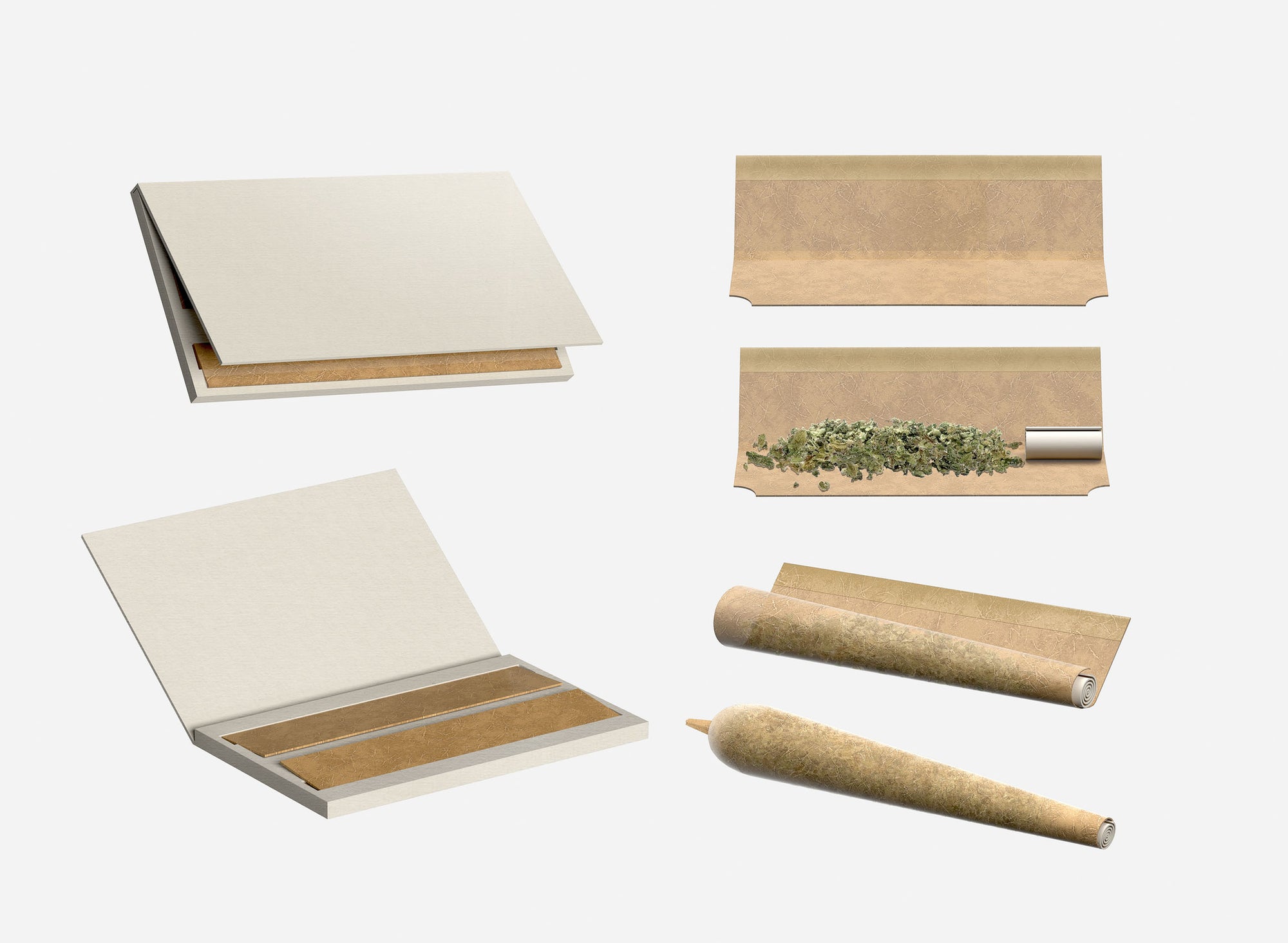
branding
Everything You Need to Know About RAW Rolling Papers: Composition, Safety, and Authenticity
Table of Contents
Composition and Materials: What Are RAW Papers Made Of?
Manufacturing and Origins: Where RAW Papers Are Made
RAW Original vs. RAW Black: Understanding the Differences
Safety Concerns: Heavy Metals and Health Considerations
Spotting Counterfeit Products: Real vs. Fake RAW Papers
Best Practices for Using RAW Rolling Papers
Everything You Need to Know About RAW Rolling Papers: Composition, Safety, and AuthenticityRAW rolling papers have become synonymous with quality in the smoking accessories market. Their distinctive brown appearance and reputation for purity have made them a favorite among consumers worldwide. This comprehensive guide explores what RAW papers are made of, where they're manufactured, safety considerations, and how to identify authentic products.Composition and Materials: What Are RAW Papers Made Of?RAW rolling papers are crafted from unbleached, unrefined plant fibers, primarily consisting of:
Hemp fibers (in RAW Hemp varieties)
Flax
Rice straw
Natural plant gums (used as adhesive)
Unlike conventional white rolling papers, RAW papers contain no chlorine bleach or artificial additives. The company emphasizes its commitment to using natural materials, which contributes to their characteristic light brown color and subtle texture.According to our guide on RAW paper varieties, the brand offers several composition options, including organic hemp and classic varieties, each with slightly different material ratios to affect burning rate and texture.Manufacturing and Origins: Where RAW Papers Are MadeRAW papers are primarily manufactured in Alcoy, Spain, a region with a rich paper-making history dating back to the 1600s. This location is significant because:
Alcoy has specialized in rolling paper production for centuries
The region's water quality and climate are considered ideal for paper production
Traditional paper-making techniques are preserved in the manufacturing process
While the brand has global distribution, the core manufacturing remains centered in this Spanish region, where artisanal techniques combine with modern quality control. For those looking to enhance their rolling experience, we offer premium rolling trays that complement RAW papers perfectly, providing a clean, organized surface for preparation.The RAW Foundation StoryFounded by Josh Kesselman, RAW emerged from a vision to create more natural smoking papers without the chemicals commonly found in white papers. The brand's philosophy centers on purity, sustainability, and giving back through the RAW Foundation, which supports various charitable initiatives worldwide.Highlight: RAW papers are manufactured in Alcoy, Spain, using traditional paper-making techniques dating back hundreds of years, with a focus on natural, unrefined materials.RAW Original vs. RAW Black: Understanding the DifferencesOne common question concerns the difference between RAW and RAW Black papers. Here's how they compare:
RAW Original: The standard unrefined paper, medium thickness, balanced burn rate
RAW Black: Ultra-thin paper (14gsm), slower burn, considered the premium line
RAW Black papers are approximately 20% thinner than the original variety, resulting in less paper per smoke. According to our analysis of RAW Black papers, this ultra-thin design aims to provide a more pure experience with less paper ash and a more delicate smoking experience.Safety Concerns: Heavy Metals and Health ConsiderationsA frequently asked question is whether RAW papers are safe to use. Several factors influence the safety profile:Heavy Metals TestingRAW papers undergo testing for heavy metals and contaminants. The company states their products are:
Tested for arsenic, cadmium, lead, and mercury
Free from chlorine bleach (which can produce dioxins when burned)
Manufactured without calcium carbonate (chalk) fillers
While no smoking product can be considered completely safe, RAW papers aim to minimize additional chemicals beyond the plant material being smoked.The Ethylene Oxide ControversySome concerns have been raised about ethylene oxide in organic materials. As explained in our article on RAW organic papers safety, the company maintains that their papers do not contain harmful levels of this compound and that their manufacturing process prioritizes safety.Spotting Counterfeit Products: Real vs. Fake RAW PapersDue to their popularity, RAW papers are frequently counterfeited. Here's how to identify authentic products:
Check for the RAW watermark when held to light
Authentic RAW papers have a unique criss-cross pattern
The gum line on genuine products is even and consistent
Packaging should have clear, crisp printing with proper registration
QR code verification is available on newer packaging
Counterfeit papers may contain unknown materials and chemicals not subject to the same testing standards as authentic RAW products, potentially posing additional health risks.Best Practices for Using RAW Rolling PapersTo get the most out of RAW rolling papers while maintaining safety:
Store in a cool, dry place to preserve freshness
Use proper rolling techniques to minimize paper use
Consider RAW tips/filters to reduce inhalation of particulates
Purchase from authorized retailers to ensure authenticity
For beginners, pre-rolled cones may offer a more consistent experience
As detailed in our guide on mastering rolling techniques, proper preparation and handling can significantly enhance the overall experience with these papers.Whether you're a longtime enthusiast or new to RAW papers, understanding their composition, origin, and how to verify authenticity ensures you're getting the experience the brand intends to deliver. While no smoking product is without health considerations, RAW's commitment to natural materials and transparency about their manufacturing processes has earned them a loyal following in the market.

